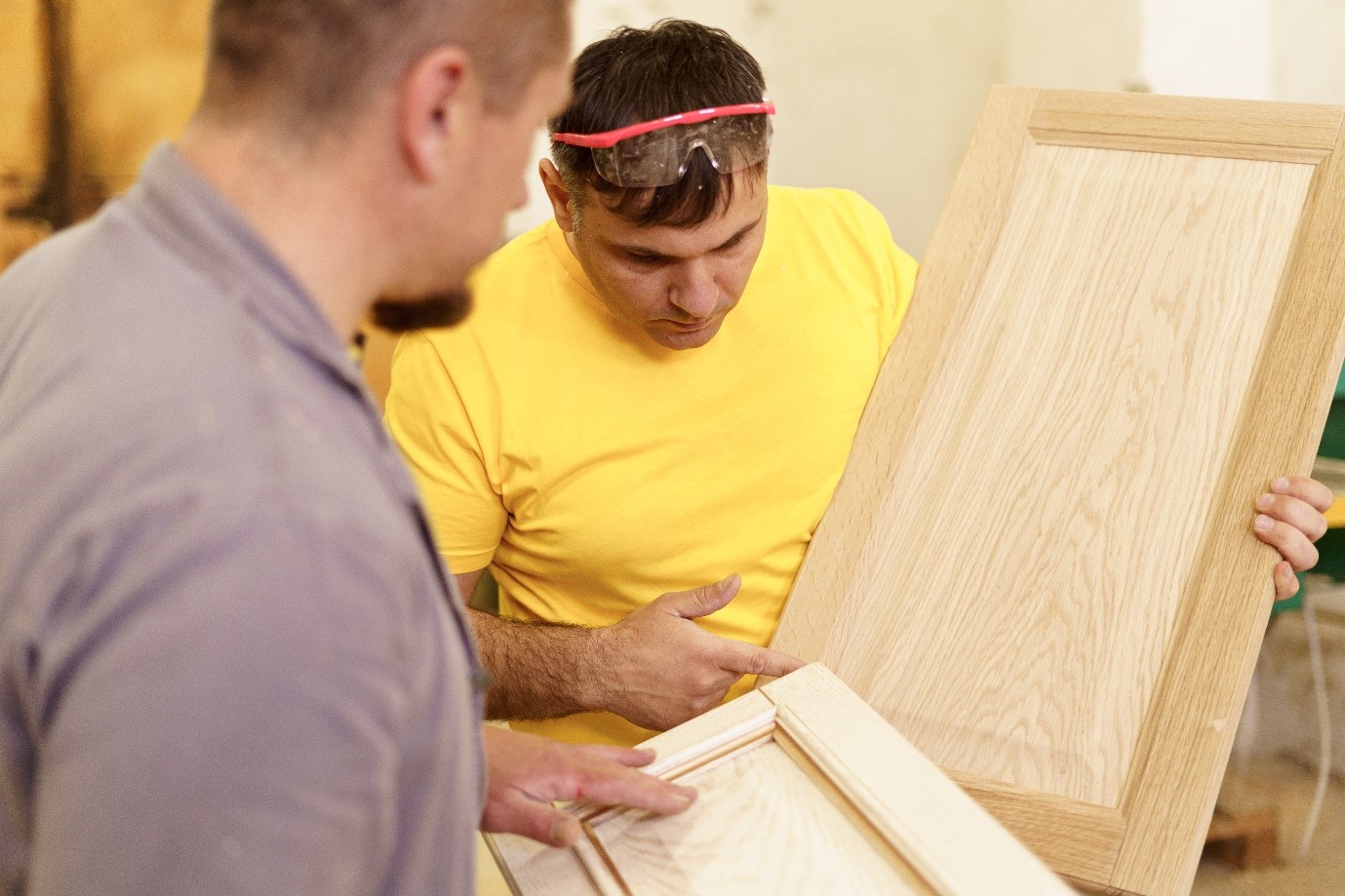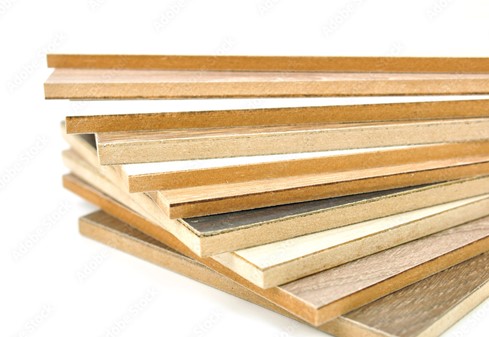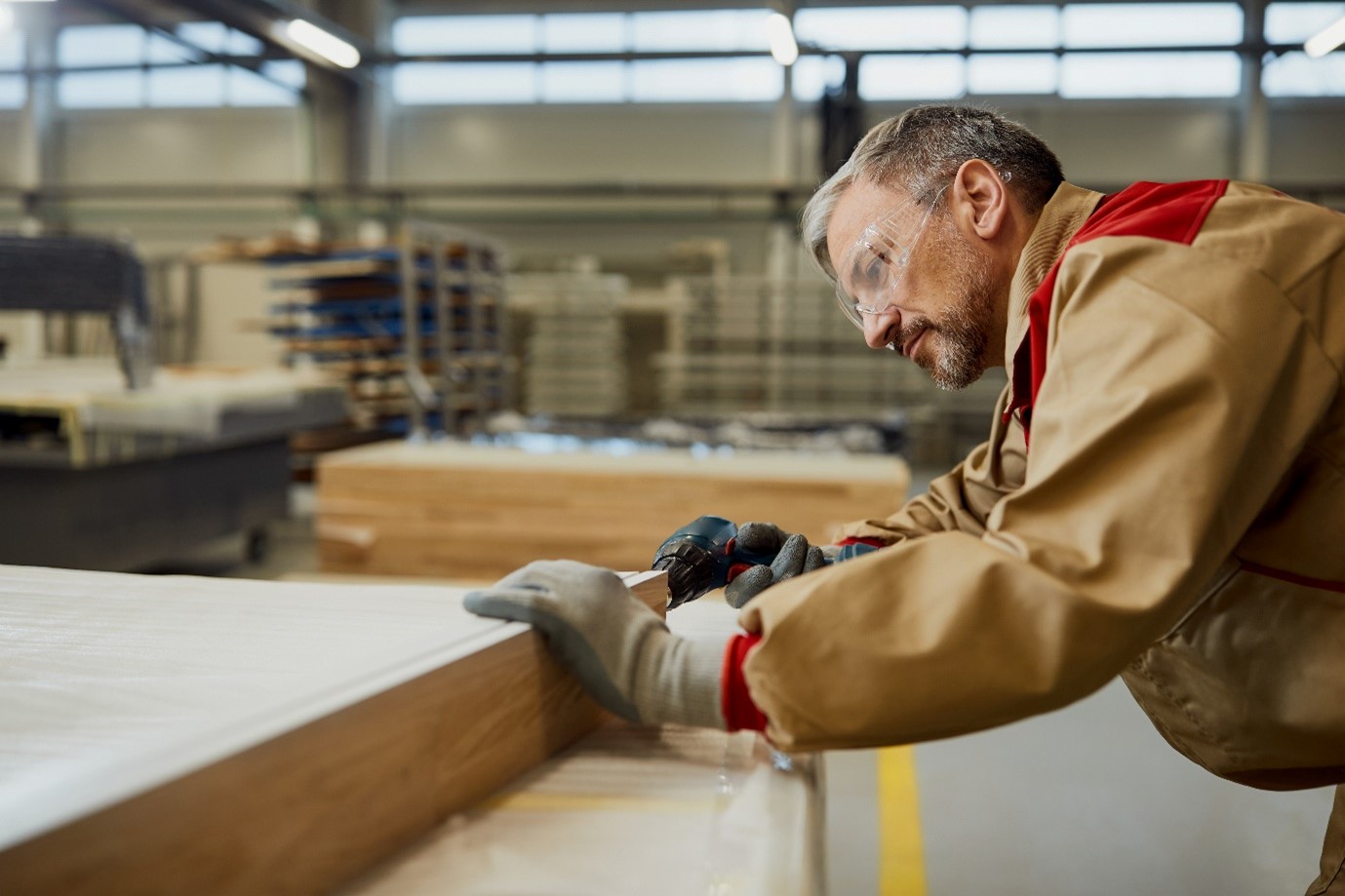Veneered MDF: A Game-Changer for Trade Professionals

For joiners, carpenters, and interior designers selecting the right materials is crucial. Veneered MDF (Medium Density Fibreboard) is a highly versatile and cost-effective choice. Whether you're crafting bespoke furniture, fitting out interiors, or working on high-end cabinetry, veneered MDF provides both the aesthetic appeal of natural wood and the practical benefits of engineered materials.
But is veneered MDF the right choice for your next project? Let’s explore its key benefits, compare it to other materials, and weigh its pros and cons for trade professionals.
MDF vs. Veneered MDF: Understanding the Differences
While MDF is a versatile material in its own right, veneered MDF takes it a step further by offering the appearance and elegance of natural wood. So, what exactly sets veneered MDF apart from traditional MDF? Here’s a breakdown of how both materials compare:
|
Feature |
MDF |
Veneered MDF |
|
Appearance |
Smooth surface but lacks natural wood finish |
Natural wood veneer finish, mimicking solid wood |
|
Workability |
Easy to cut, shape, and machine |
Same as MDF, but requires careful handling of veneer |
|
Stability |
Stable but can expand slightly with moisture |
More stable, less prone to moisture-related changes |
|
Cost |
More affordable than veneered MDF |
Slightly more expensive due to the veneer layer |
|
Sustainability |
Uses less wood than solid timber |
Still uses engineered materials, but has a real wood finish |
|
Durability |
Prone to damage from moisture and impact |
Offers additional durability and appearance due to the veneer |
What is Veneered MDF?

Veneered MDF consists of a thin layer of natural wood veneer bonded to an MDF core. This combination retains the visual elegance of solid wood while offering the stability and affordability of MDF. The veneer layer can be crafted from oak, walnut, ash, maple, and many other wood species, allowing for premium finishes without the high cost of solid timber.
How Does Veneered MDF Compare to Other Materials?
Choosing between veneered MDF, solid wood, and plywood depends on factors such as budget, durability, and workability. Here’s how they compare:
|
Feature |
Veneered MDF |
Solid Wood |
Plywood |
|
Appearance |
Natural wood veneer finish |
Authentic wood grain & texture |
Wood grain but with visible layers |
|
Workability |
Easy to cut and machine |
Harder to work with, can warp |
Strong and holds screws well |
|
Stability |
Stable, resistant to warping |
Can expand/contract with moisture |
More stable than solid wood but can delaminate |
|
Cost |
More affordable than solid wood |
Expensive, varies by species |
Mid-range pricing |
|
Sustainability |
Uses less hardwood, making it eco-friendlier |
Can be sustainable but depends on sourcing |
Often made with formaldehyde-based adhesives |
Veneered MDF strikes a balance between affordability, aesthetics, and workability, making it an ideal alternative to solid wood and a more refined option compared to standard MDF or plywood.
Oak Veneered MDF: A Premium Choice for Timeless Elegance
One of the most popular options in veneered MDF is oak veneered MDF, which offers the classic beauty and warmth of oak with the practicality and cost-efficiency of MDF. Oak is a timeless material known for its rich grain and durability, and when bonded to the smooth and stable MDF core, it creates a robust, yet highly attractive material.

Why Choose Oak Veneered MDF?
- Aesthetic Appeal: Oak has a distinctive grain pattern and colour that adds elegance to any interior. Whether you're designing bespoke furniture, high-end cabinetry, or wall panelling, oak veneered MDF brings a natural, premium look without the high cost of solid oak.
- Durability: Oak is renowned for its durability, and when combined with MDF, the result is a material that offers both strength and resilience. It’s ideal for projects that require long-lasting quality.
- Cost-Effective: While solid oak can be expensive, oak veneered MDF provides the same visual appeal at a significantly reduced price, making it perfect for those working with a tighter budget while still aiming for a luxurious finish.
- Versatility: Oak veneered MDF is perfect for a wide range of applications, from furniture making and joinery to commercial interiors and home renovations. Its versatile nature makes it suitable for both traditional and modern design styles.
Pros & Cons of Using Veneered MDF
✅ Advantages of Veneered MDF:
✔ Aesthetically Pleasing – Offers the rich look of natural wood without the cost.
✔ Smooth & Consistent Surface – Unlike solid wood, it has no knots or grain inconsistencies, making it perfect for creating a polished finish.
✔ Easy to Work With – Cuts cleanly, machines well, and is perfect for detailed joinery and cabinetry work.
✔ Cost-Effective – Achieves a luxury wood finish at a lower price than solid timber.
✔ Stable & Less Prone to Warping – Unlike solid wood, MDF doesn’t expand or contract significantly with humidity or temperature changes.
✔ Available in a Variety of Finishes – Choose from oak, walnut, ash, maple, and more to suit your design needs.
❌ Disadvantages of Veneered MDF:
✘ Not as Durable as Solid Wood – While stable, it can be damaged more easily than hardwood, especially in high-traffic areas.
✘ Edges Require Finishing – The exposed MDF core must be edged or sealed for a clean look. Without proper finishing, the edges can appear rough and unfinished.
✘ Moisture Sensitivity – Is not waterproof and requires sealing for use in humid environments such as bathrooms or kitchens.
✘ Sanding Risks – Over-sanding can damage the thin veneer layer, exposing the MDF beneath. Always use fine-grade sandpaper and avoid over-sanding the veneer.
Best Uses for Veneered MDF in Trade & Interior Design
Veneered MDF offers a wide range of uses in the trade industry, thanks to its affordability, versatility, and aesthetic appeal. Here are some of the best applications for this material:
✔ Bespoke Joinery & Cabinetry – Ideal for creating high-quality kitchen units, wardrobes, and shelving. The smooth surface ensures easy finishing, whether you're staining or painting.
✔ Wall Panelling & Decorative Features – It can be used to add a luxurious, natural wood effect to walls, offering a sophisticated design choice at a fraction of the cost of solid wood panelling.
✔ Retail & Office Interiors – Provides a high-end look that’s ideal for commercial fit-outs. Veneered MDF can be used for everything from partitions to reception desks, creating a professional aesthetic.
✔ Furniture Making – Perfect for making tables, doors, and fitted storage solutions. Veneered MDF ensures a durable yet stylish finish for any type of furniture.
Why Trade Professionals Love Veneered MDF
For carpenters, joiners, and interior designers, veneered MDF is an outstanding material that combines practicality, aesthetics, and affordability. It provides the elegance of solid wood while offering greater stability and ease of workability. Whether you're crafting high-end furniture or working on commercial interiors, veneered MDF delivers premium results without the premium cost.
Thinking of using veneered MDF for your next project? Make sure to source high-quality sheets and pair them with expert finishing techniques for the best results. At George Hill Timber & Building Supplies, we offer a wide selection of products, perfect for all your interior design and woodworking needs.

